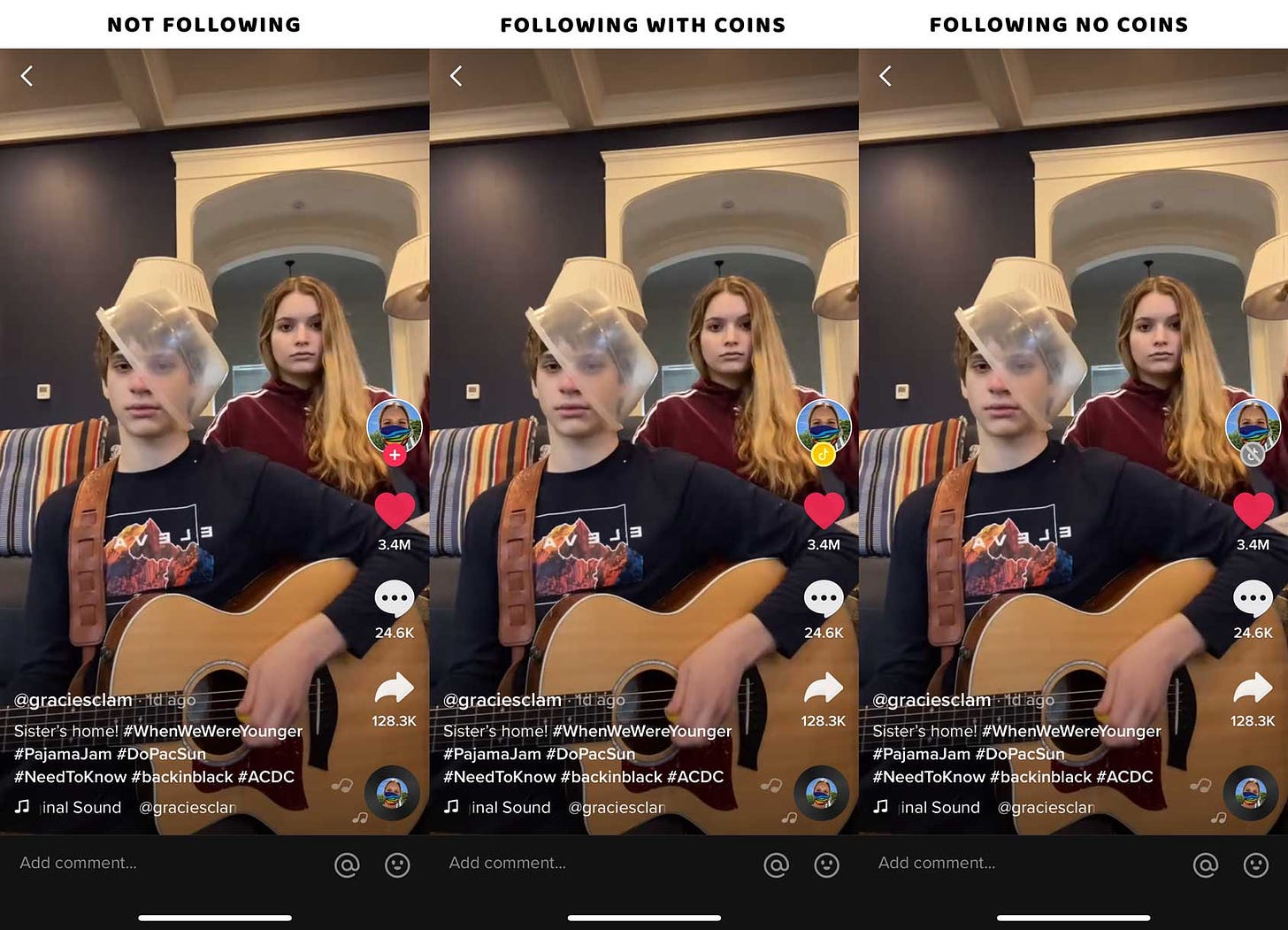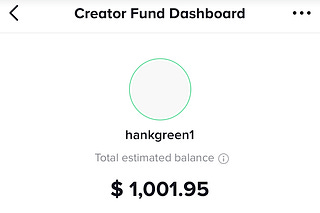

Discover more from Pay Attention
Letting Users Decide Who Gets Paid
Let's Reimagine How We Distribute Money in the Content Ecosystem
In a world where people are starting to pay more and more money to content platforms, and those platforms share that money with creators it’s about time we gave users the ability to decide what kind of content they want to reward.
That’s not how it works right now. Spotify pays per stream, whether you’re listening or not. YouTube Premium pays per minute of watch time whether you like it or not. TikTok’s creator fund is distributed based on “engagement” (whatever that is.) And all of this is fine. But why not set aside a portion of this money and give it to the audience for them to distribute themselves.
Right now, on TikTok, if you aren’t following someone, a little red + appears overlapping their icon. To follow them, you click that +, and when you do, it disappears. What if, instead, it were replaced by a TikTok Coin icon. Maybe every user gets 7 of these to doll out per week. And, of course, once you’ve used them all, it grays itself out, and, if you click it, you’ll be prompted to get more coins.
The same could be done on YouTube and Spotify easily. A feature that makes intuitive sense and rewards not just the content that does the best job of sucking you in, but that you think deserves your support.
After all, I believe with all my hear that Penelope Scott deserves more of my Spotify revenue than “Box Fan Noise” and yet….Box Fan Noise is listened to more.
A micro-tipping system seems like a clear win. Another revenue stream opens up for platforms and creators, and users of the platform are invited into the process of deciding what content is rewarded. They make decisions that they can witness impacting the lives of their favorite creators. Instead of giving my YouTube Premium money equally to the boat crash compilations I guiltily watched at 2AM, I can decide to give a larger portion to channels that enrich my life or make me feel like I’m part of something.
I’m not saying this fixes everything. Many people feel deeply served by content that makes them feel superior or angry or frightened. Take a look at the top Patreon accounts and you’ll see a lot of pretty focused in-group content. But also a lot of high quality communities.
But every new monetization system has surprising effects. So let’s walk through some ways this system might change the incentives on a platform.
Disincentivizes Viral Content
I have a guess that we will all admit that a good boat crash video might capture our attention…but we’re unlikely to think, “Geez, I liked that so much I will give it money.”
Incentivizes Creativity
When something astounds and surprises us, when it loops the things we love into a neat little bow, and when we can see the creativity, intelligence, and hard work that went into something, I think that’s when people will give.
Disincentivizes Content Licensing
The ecosystem of gathering together viral clips through licensing (or just freebooting) captures a lot of attention, but it does not impress enough to garner a tip.
Incentivizes Community
If you feel connected to the person, that’s also means you want to help them. This is a lot of what makes Patreon so powerful. Now, this community doesn’t have to be healthy. In fact, it can suck a lot. It can be about the powerful indulging in victimhood narratives. It can be manipulative. Some communities define themselves more by who the exclude than who they include. But community is usually constructive, and god knows we all need more of it right now.
Decreases the Relative Power of Brands
If people have other ways of making money, the existing systems that create an internet that is largely about creating dissatisfaction in people so that you can sell them beauty products and self-actualization courses loses relative power.
Incentivizes Direct Appeals
Even when only notifications or engagements are being cultivated, creators ask people to like, share, subscribe, and RING THAT BELL. So, of course, creators are going to spend a little time asking for tips. I don’t mind this, as I think it quickly subsides and becomes just a part of the language of the creator / viewer dynamic.
DO NOT FORGET
The current system has its own system of incentives and disincentives. YouTube prioritizes watch time, creators find ways to create inexpensive, captivating, long-form videos. TikTok prioritizes multiple views, creators stick the best moment of the video at the very end so you have to re-watch multiple times to see it. Twitch streamers mostly make money through subscriptions, so they prioritizes connecting with their audiences.
People working at these platforms are more and more conscious of the fact that they can have tremendous negative impacts on society, and so they need to design the way they recommend and reward content carefully, and I think it’s likely that giving over some of the power to do that to the users of the platform could have wide-ranging positive impacts.
—
CORRECTION: An earlier version of this referred to TrueAnon as a QAnon podcast. It is not, it’s a left-wing Epstein-focused True Crime podcast that does, unsurprisingly, deal in a lot of conspiracy theory. Sorry I screwed that one up. Wikipedia Article for More.
Subscribe to Pay Attention
Attention is becoming the one true currency, and that affects everything.













This is the way. What we have here is a big PR issue - how can we get these ideas in front of the masses and then the suits in San Bruno? My theory with media change in general is that it's about engaging parents of young kids first. If these ideas work with the most cautious users, families, then they will trickle up to teens and then adults.
Reminds me of the Twitch system where I can use my free Amazon Prime subscription to support a streamer I love.